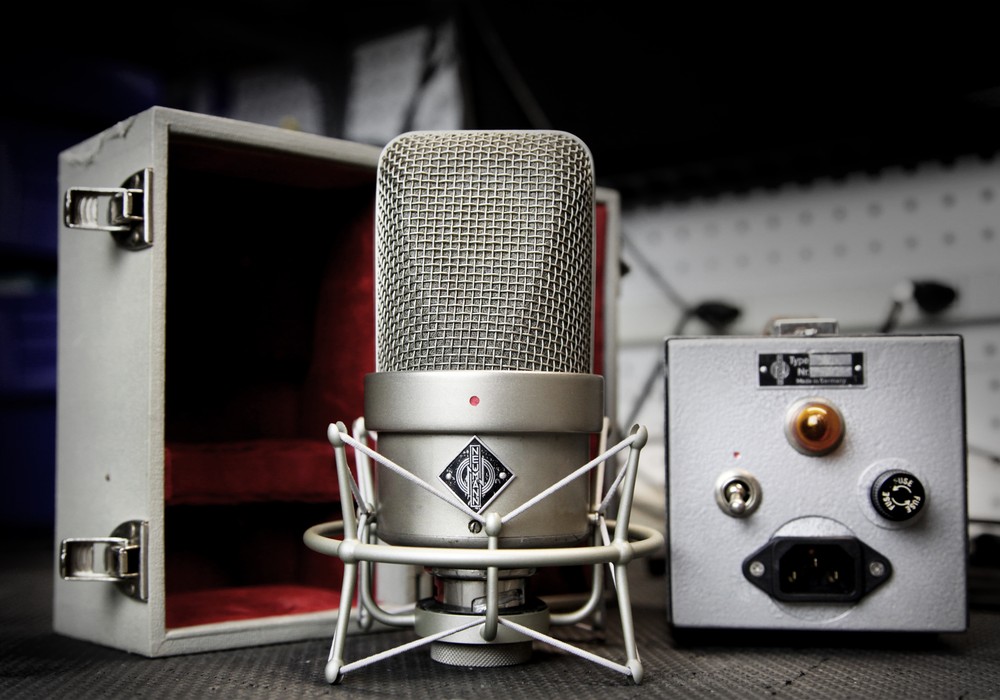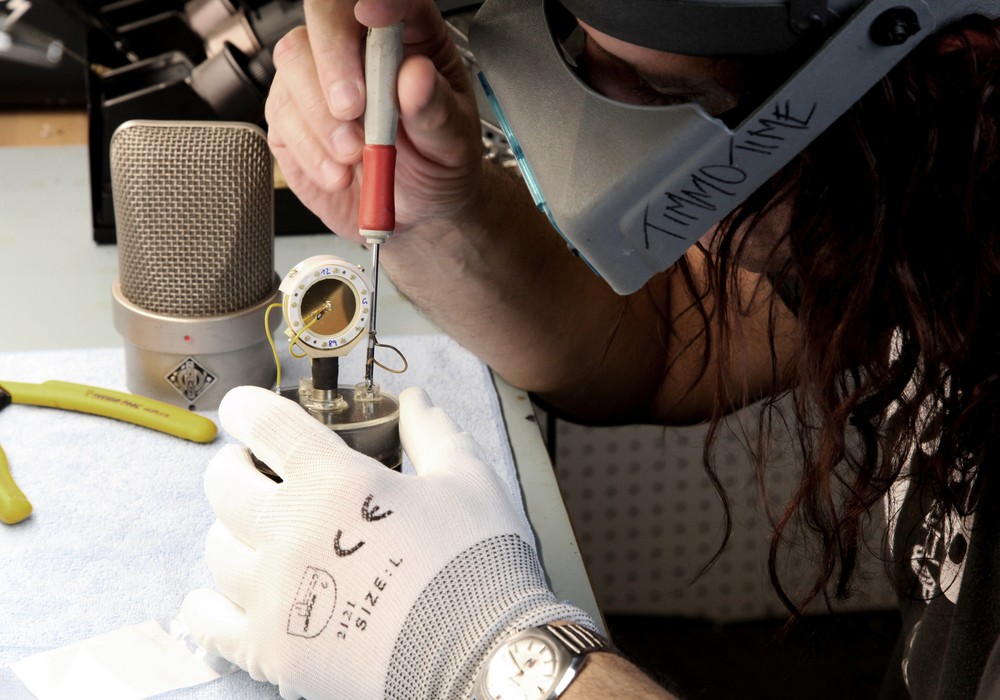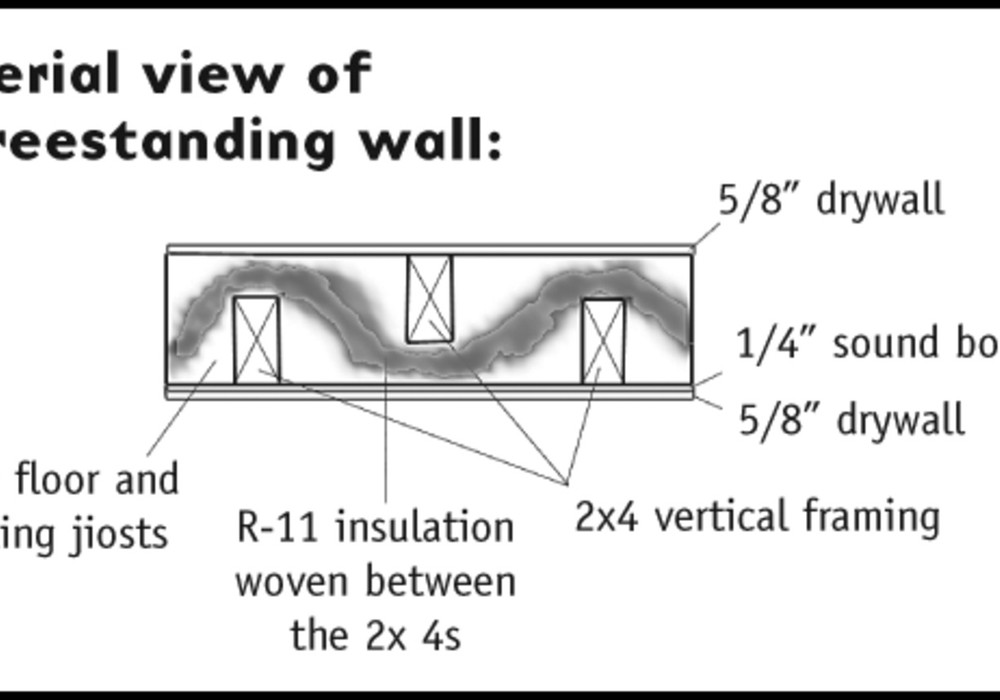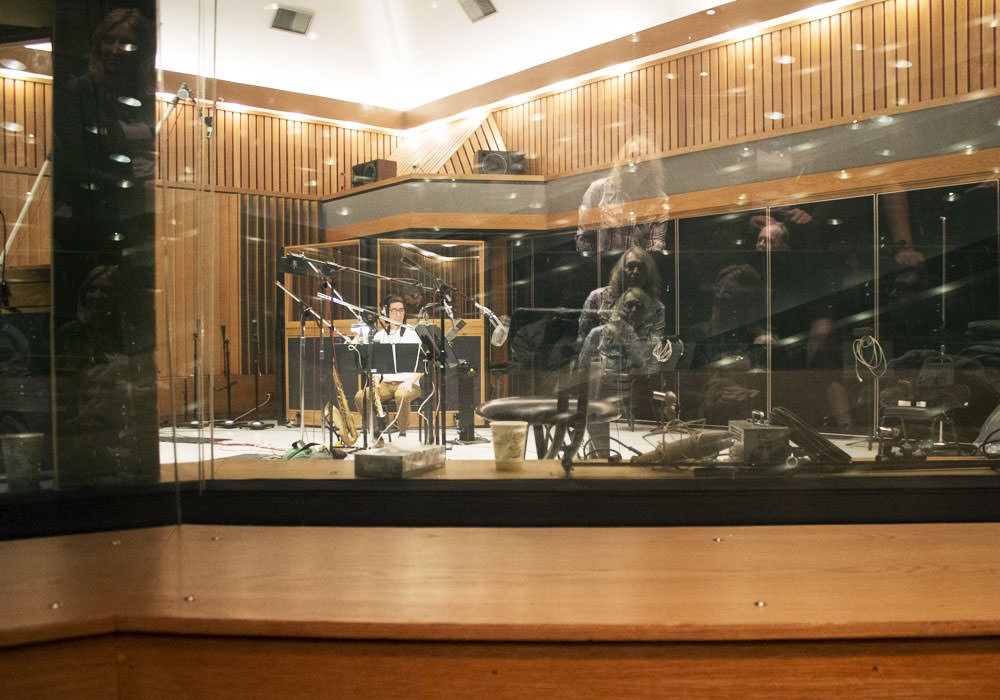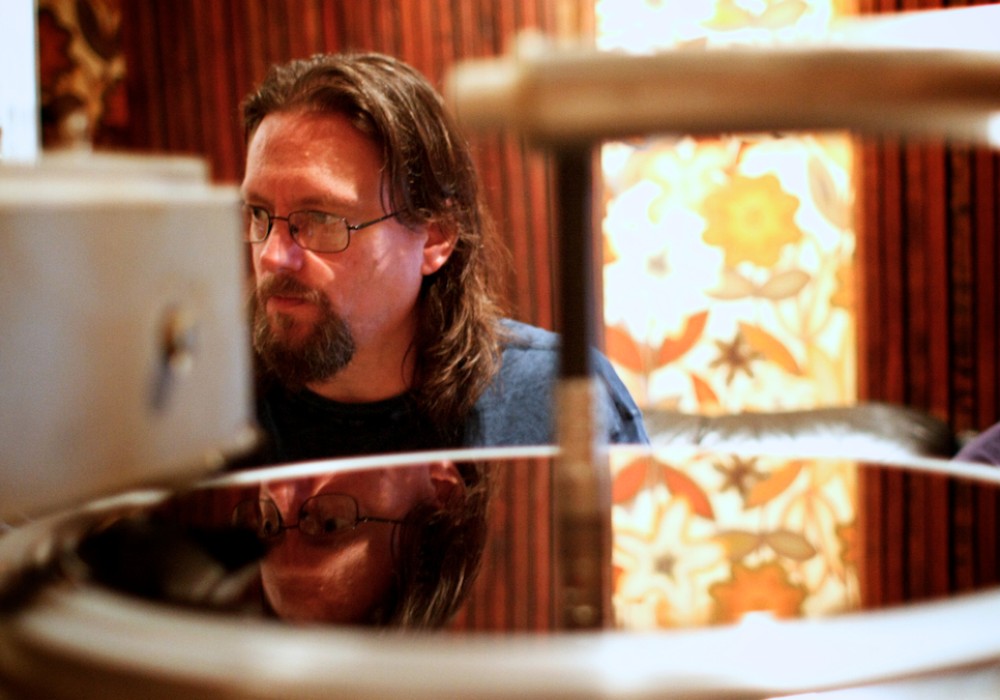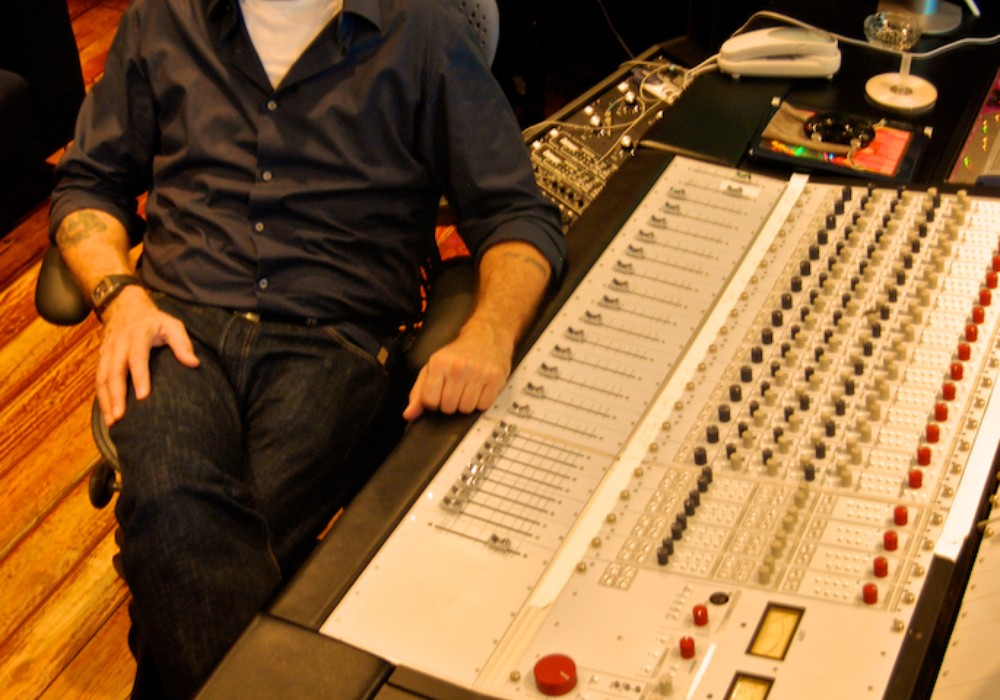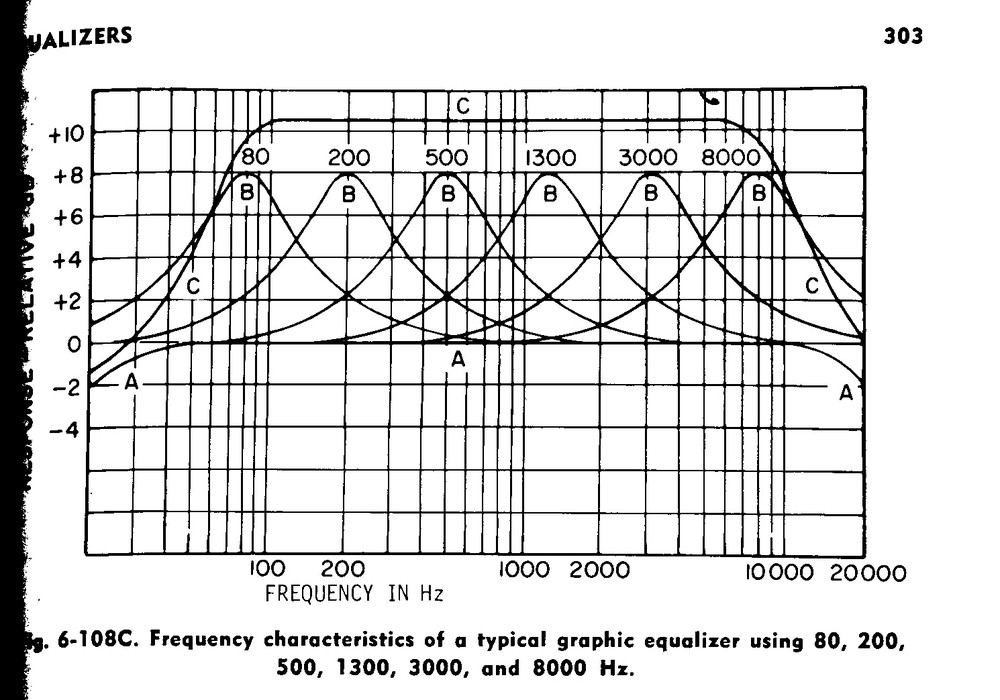What is the attraction of vintage microphones? While we all may spend more hands-on studio time with our outboard gear, our console, and so on, there's undoubtedly a uniquely personal connection we have with the microphone. In one way or another, our clients describe that connection, that feeling all the time — engineers, musicians, and producers alike. However you explain the attraction, the pull toward the vintage pieces, the classics, is just on a different level.
First, so many classic mics inherently sound superb, often surpassing some of the countless modern offerings and reproductions out there. Don't get me wrong, there are some great new mics on the market, but when you have a properly serviced marquee mic, they can be hard to beat. There's somewhat of a special glow about them, a bit of unique color, depth, dimension, and unintended distortion that generates that unexplainable "wow" factor. Put a great U47 in front of a phenomenal singer, a fine U67 properly placed on a good old Gibson acoustic with the right player, or a Decca tree Neumann M50 trio in front of an orchestra or vocal choir, close your eyes, and you'll feel shivers run up your spine. The depth of field and realism can be stunning.
Another part of the allure is the soul factor — knowing these microphones have been lending their sound on project after project, maybe even brilliant projects, over the course of decades. That connection to history gives a living, breathing sense of "soul" to the mics, and even the studio itself. It's the same sort of feeling musicians have when playing their prized vintage guitars and instruments. Because of the unique story attached to each microphone, you'll find an individual sense of personality from Elam 251 to 251, U47 to U47, U67 to U67, and so on. That extra something that comes with age just can't be found in new, off-the-shelf, more generic offerings. Mic restorations make the most of that. It's not something you can create or take away.
As far as application goes, many engineers find that having one, two, or several of these marquee microphones not only help them produce the best end results, but in a commercial environment, also help them draw clients who demand the best and most familiar vintage models. On top of that, there's something to be said about a vintage mic's connection to the performance itself, the connection directly to the client. There's the impressive look, sure. That helps set the mood. Still, just the all-out tone coming back at the artist through the headphones can take the performance somewhere new, elevating the sound, creating that moment we all wait for behind the board.
Finally, and maybe foremost, vintage microphones are both day-to-day tools of one's trade as well as an investment that steadily rises in value, just like a blue chip stock gains over time. How many purchases do we make in life that give us something unique, which we can use all the time, and that constantly appreciates? Not many!
Why are vintage microphones expensive?
Just as with anything classic in life, it comes down to supply versus demand. There were only so many of the various makes and models made, and the demand far outweighs the supply. I remember when I started my career as an engineer around 30 years ago, their demand was high even then. However, within the last decade, due to the DAW, we've seen the advent of affordable recording and the exponential rise in emerging engineers and artists. Demand for a centerpiece classic, such as a U47, has absolutely gone through the roof. Many artists who record in their apartments or home studios now want a top-shelf, high-end classic vocal/instrument microphone. That being said, there are now a lot of eyes on these microphones, whenever a great example is made available for sale. Last, it's worth noting that most vintage mics represent a build quality you don't often find today. Along with being solid investment prospects, these are often high-caliber microphones, by any standard. That quality is reflected in the price.
How easy are they to use today in a modern setup?
Simple. Vintage mics just require a bit more care in terms of handling them, like any valuable. Instead of using phantom power for a condenser, a tube condenser has an external power supply. Some have multiple patterns selectable from the mic, others from the power supply or an external pattern box (for example, the AKG C12). Once properly serviced and when handled lovingly, these mics really only require routine maintenance every few years — and the tone is so worth it. Classic ribbons are no different than many new ribbons. Just be careful not to walk around your recording room without the mic covered, as the ribbons are delicate. Also, don't plug into a mic pre with 48V turned on or you can hurt the ribbon. Outside of that, you might want to be aware of noise floor. There's no doubt that some vintage mics will spec a bit higher. However, within most applications, this noise floor is masked by the music production itself. Unless you are doing breathtakingly quiet passages within certain genres of music, such as spoken word or softer areas in a film score, in most instances, the use of occasional gating will be acceptable, while still giving you the tremendous benefits of a vintage mic.
How safe is my investment?
As I mentioned earlier, these mics increase in value over time. When I started, I bought a tube U47 for $700 in 1990. In 2012, a fine, properly serviced example with a warranty can bring $15,000. That's a huge return. Sometimes, I wish that instead of selling the hundreds of 47s Vintage King has sold over the past two decades, we kept a dozen for investment, but it just wasn't practical at the time — not to mention, no one had a crystal ball. At any rate, we can't seem to find enough to keep our customers happy. :)
What should I look or listen for?
A good start is to make sure you're buying a mic that has been properly serviced and cared for over the years. To be really confident in your purchase, it's wise to choose a reputable microphone dealer, someone who works with these old microphones a lot and knows them inside and out. For example, nearly every classic mic available at Vintage King receives our Premium Service package, comes with a trial period and, for most, a free warranty, too. Of course, we're all looking for that bargain-priced diamond in the rough. If you find a mic and you're uncertain about its background, you can still learn quite a bit through a careful inspection and listening test. Still, you have to know what you're looking and listening for. If you have a trusted mic tech or knowledgeable friend, it's always helpful to enlist a second set of eyes and ears.
When you begin evaluating a microphone for potential purchase, the first thing I recommend doing is plugging the mic into a preamp you know and listening for a low noise floor. While many mics from this older era have a bit higher noise floor than new models, you should ask yourself whether the mic sounds excessively noisy. Do you hear any white noise? Are there hums, crackles, or pops? If you're evaluating a U47, does the inherent noise floor come up steadily and slowly when the tube ramps up from power on?
You'll also want to check for how even the mic sounds throughout its tonal range. You can do this by speaking or singing closely into the mic. Are the lows there and not too muddy, not too thin? Is the top end there or is it dull or unusually faded? Are the mids too forward or lacking completely? Of course, certain mics characteristically have their own response. A Neumann U67 will have a more chilled bottom and top end, with a bit more mid focus. A Sony C37a will have a darker overall tone with a bigger bottom end and a silky top end. A Neumann m49 will have a more even overall response. Before buying a mic off eBay and expecting to plug and play a holy grail, you should do your homework by reading about them, listening to those belonging to friends, or by listening to "known" proper sound examples. It's not that you can't find good mics here and there on auction sites — you can. However, it helps if know what to look for within the details of the photos, particularly on the internal pics of components — original transformers, capsules, tubes, capacitors, and correct wiring — and you also have to be willing to take a risk if you receive a bummer mic and there's no return policy from the seller. For instance, I've seen a sizable amount of bogus U47s floating around with an unusual proportion of newer components and metal work. They look very much like a vintage U47 to the untrained eye, and they're just waiting there for a buyer who hasn't done due diligence. Fortunately, there's a lot of great information out there about classic microphones and, once you dig into it, learning about them can be a fun and rewarding experience in itself. Hop on a forum, call some people — nearly all of us at Vintage King love this classic gear and love talking about it. It's not hard to find a community of vintage-mic-obsessed musicians and engineers all over the Internet and all over the world. Most everyone loves to help.
If you do go with a microphone in need of some immediate attention, or you aren't sure, I advise budgeting a little aside to have a legitimate, well-established mic tech evaluate it, right off the bat. When a mic's in the right hands, removing poor mods, rectifying incorrect servicing methods, and replacing wrong components can breathe new life into it and unveil the tonal potential of the classic. Why not hear a mic at its best? A thorough servicing can give you peace of mind, too. With proper attention, these mics can easily last well beyond our lifetime, bringing years of enjoyment and investment value.
Microphone Appraisal Tips
- For maximum long-term value, look for mics made between about 1949 and 1970. This is known as the "golden age" of microphones, when the manufacture of tube and tube-based technology was at its peak.
- Keep in mind that tube microphones tend to be more desirable and, in turn, more valuable in the long run, due to their subjectively more "musical" results, yielding added warmth, richness, and detail.
- If the tubes and transformers are original, it will greatly enhance the value, while original cables, shockmounts, and tube power supplies are significantly less important.
- Ribbons are the exception to the "rule of originals." If you're buying a ribbon mic with an original aluminum ribbon, budget for a $300-$500 ribbon replacement to increase the mic's market value and make it usable.
- Don't judge a book by its cover — cosmetic condition is important, but it takes a backseat to the condition and originality of a microphone's guts. We find that many of the best-sounding examples appear to be the most beat up.
- Do your research, but consider enlisting the help of a trusted expert. We're always happy to consult with our clients to make sure they're making smart additions to their studios. What's more, wherever a mic may fall short, we can offer honest insight before your purchase or reasonably and properly restore it after you do.
Behind the Scenes of a Vintage King Microphone Restoration
Over the past two decades, we've developed a process that allows us to evaluate the needs of individual microphones, while ensuring that no detail is missed. With our eyes on specs and our ears on tone, the goal is always to make the most of a microphone's potential, while preserving its intended voice. Our team of microphone restoration specialists regularly service all kinds of microphones, no matter the type, year, manufacturer, or condition. However, one of the items most requested items for servicing is a vintage large-diaphragm tube microphone, which we'll use as an example. Whatever the microphone, its restoration process always begins in the hands of our head microphone technician, Timmo Johnson.
Address the Power Supply and Correct Any Problems
Understanding that a tube microphone is predicated on power, Timmo first evaluates the mic's power supply unit (PSU), ensuring it's up to standards. Timmo opens up the PSU, noting the components and paying special attention to the capacitors, or caps. If the caps are in good shape and not leaking, he'll leave them alone. However, if they raise any flags, Timmo will being the recap process. He'll next check the PSU for any modifications, reversing them if possible, then check that the voltage is properly switched. To bring the PSU to today's functional and safety standards, unless absolute originality is requested, Timmo will change the PSU output to XLR and change the power cable to a standard IEC with an appropriate chassis ground, something not often found on vintage PSUs. Any necessary cleaning of the PSU interior also takes place at this time.
Evaluate and Restore the Microphone Diaphragm
Once the PSU is in order, Timmo turns his attention to the microphone itself. He'll carefully remove the head grille and examine the diaphragm, checking for pinholes, pitting, or obvious damage to the membrane. Some diaphragms will have lost a bit of the gold layer. While they may still work and produce a sound, we will generally replace them, as we cannot warranty their behavior in the future. If a replacement is called for, we'll choose only the most trusted, authentic replacement part, from the likes of Neumann, Siegfried Thiersch, or Doug Walker. If the existing capsule passes Timmo's careful inspection, he'll give it a gentle cleaning, without the use of solvents, then turn his attention to the microphone amplifier.
Examine the Microphone's Electronics
Inside the body of the microphone are the amplifier, transformer, and various wiring. Timmo checks for the originality of these components, and whether any modifications have been made. At this time, he'll repair or replace any loose wiring or bad solder joints. He will also undo any mods, if possible, and check all electronics to ensure they are in good shape and within specifications, with any faults being repaired at this time. While the microphone is apart, it's a good time to repair any cosmetic blemishes. For example, the head grille often has been dented over many years of use. Timmo can bump out most dents, but in more severe cases, especially on oddly shaped grilled, such as a U67, the grille damage may not be completely fixable.
Set BIAS and Voltage Values
Once the microphone itself is in excellent condition, Timmo will reassemble the microphone and set the correct bias. To ensure correct operating voltage, Timmo puts the PSU on a Variac, set to the customer's local voltage on the input. Meanwhile, all DC output voltages (both the high voltage and the filament/heater voltage) are set to the proper values for the tube.
Final Listening Tests and Shipment Preparation
At this point, the microphone is ready to be burned in and thoroughly tested. To ensure the tube is stable, we burn the tube mic in for a few hours. Then, both Timmo and another member of our quality control team subject the microphone to a number of listening tests, critically evaluating the mic for desired tone and expected performance, based on its specific model.
We will, of course, address any remaining cosmetic issues at this time, perhaps replacing the leather handle on an older Neumann PSU for example or, in extreme cases, repainting the PSU with a new hammer-tone finish, if desired. Once everything looks and sounds its best, the mic is passed to the shipping team for careful packaging and shipment to the customer. We include a 1-year service warranty with almost every microphone we handle, whether it's a classic mic purchased directly from us or one sent for restoration. After this level of meticulous, step-by-step attention and a suggested maintenance plan in place, we are confident that the freshly serviced microphone will provide many years of great tone and service, no matter where it ends up in the future.


